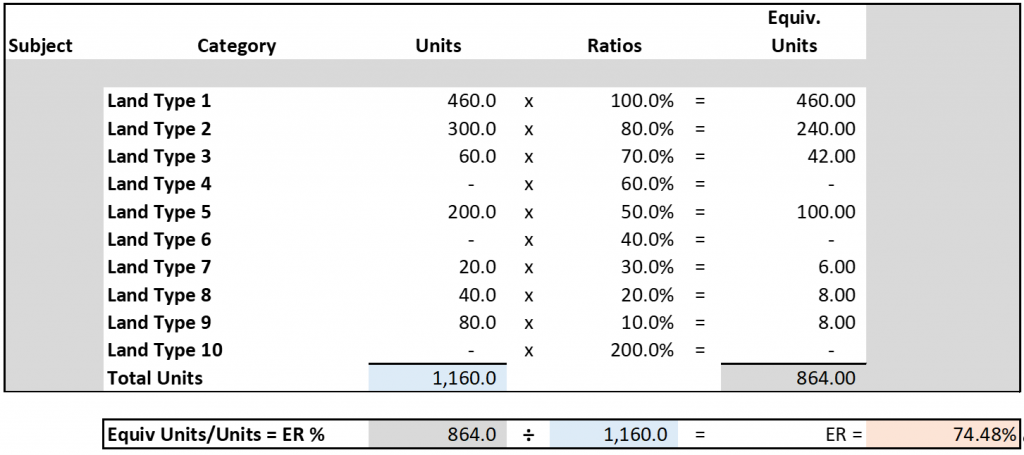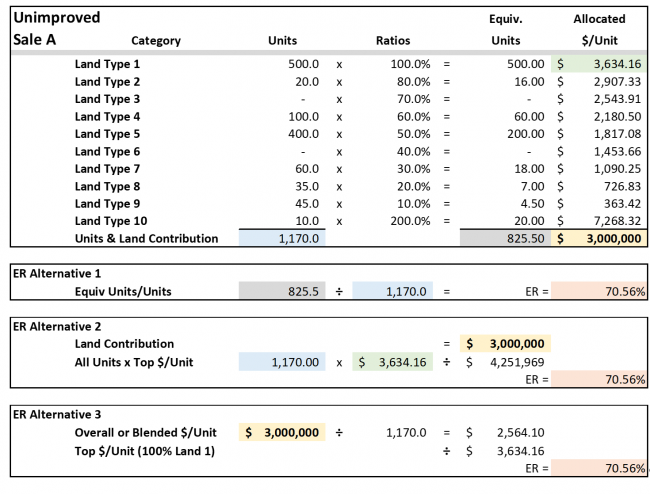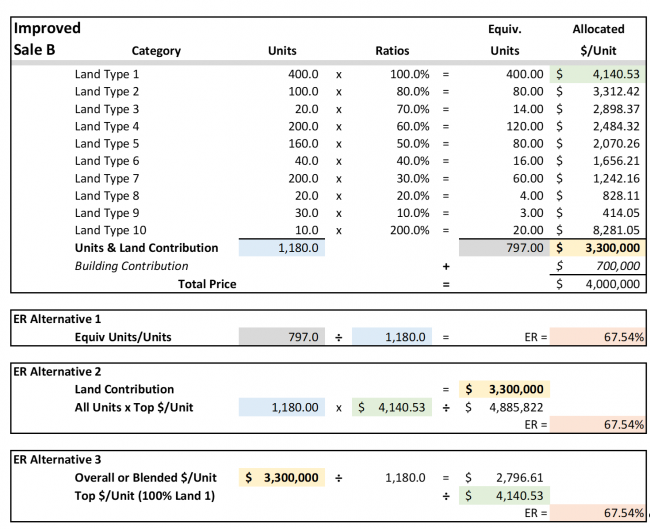3 ways to calculate ER
![]()
The ER replaces the ASFMRA’s traditional “land-mix” procedure that contained multiple computations. The process converts the “land contribution” within each sale to a mathematical percentage, an expression of the “whole”. To begin, subject ratios are required to express its mathematic composition (74.48% below). Then, one (1) unimproved and one (1) improved sale were reduced to the same mathematical “expression” or Equivalency Ratio to ultimately compute the “land-mix” adjustment for each.
When this process is repeated for each sale, the percent change between the sales and subject provide the basis for a simple calculation for the differences in “land-mix” or composition disparities. Two sales are shown below, i.e., one unimproved and one improved; plus, three (3) ways to compute the Sale ER’s.
Note for Alternative 2 below: The $3,000,00 “Land Contribution” is divided by the “Gross Units x Top $/unit” or 1,170 gross units x $3,634.16/acre for Land Type 1 = $4,251,969 which becomes the denominator for the calculation shown inside the smaller box ($3,000,000 ÷ $4,251,969 = 70.56%).
|
|
|
|
The Land-Mix Summary: |
ER Factors |
|
ER Factors |
|
Sale A |
70.46% |
Sale B |
67.54% |
|
Subject |
74.48% |
Subject |
74.48% |
|
% Change (NOT % Difference) |
5.71% |
|
10.28% |
|
or = (Difference ÷ Sale Base) |
↓ |
|
↓ |
|
SCA Grid Blended $/Acre |
$2,564.10 |
|
$2,796.61 |
|
% Adjustment |
5.71% |
|
10.28% |
|
$/Acre Adjustment |
+ $ 146.41 |
|
+ $ 287.49 |
|
Land-Mix Adjusted $/Acre |
$2,710.51 |
|
$3,084.10 |
If the Subject is improved, an additional adjustment may be required — to both sales. Even though Sale B is improved, the structures may be different sizes, condition, and remaining effective ages and require additional consideration(s), or “+, -, or =” calculations for its final impact on the final price per acre.



